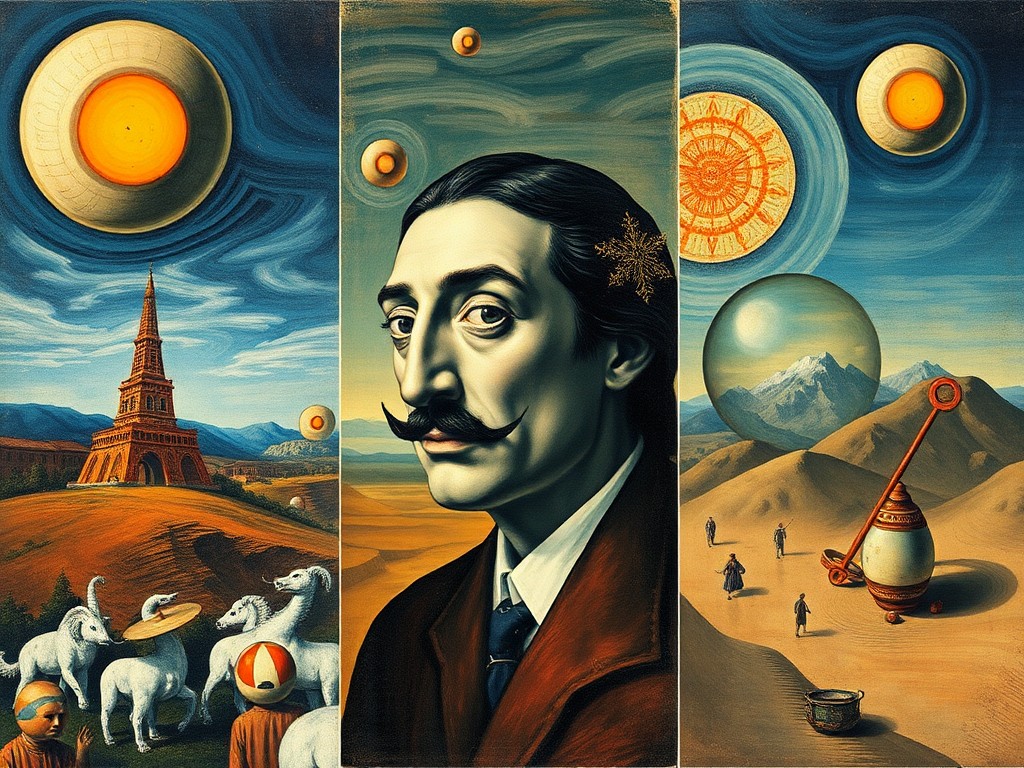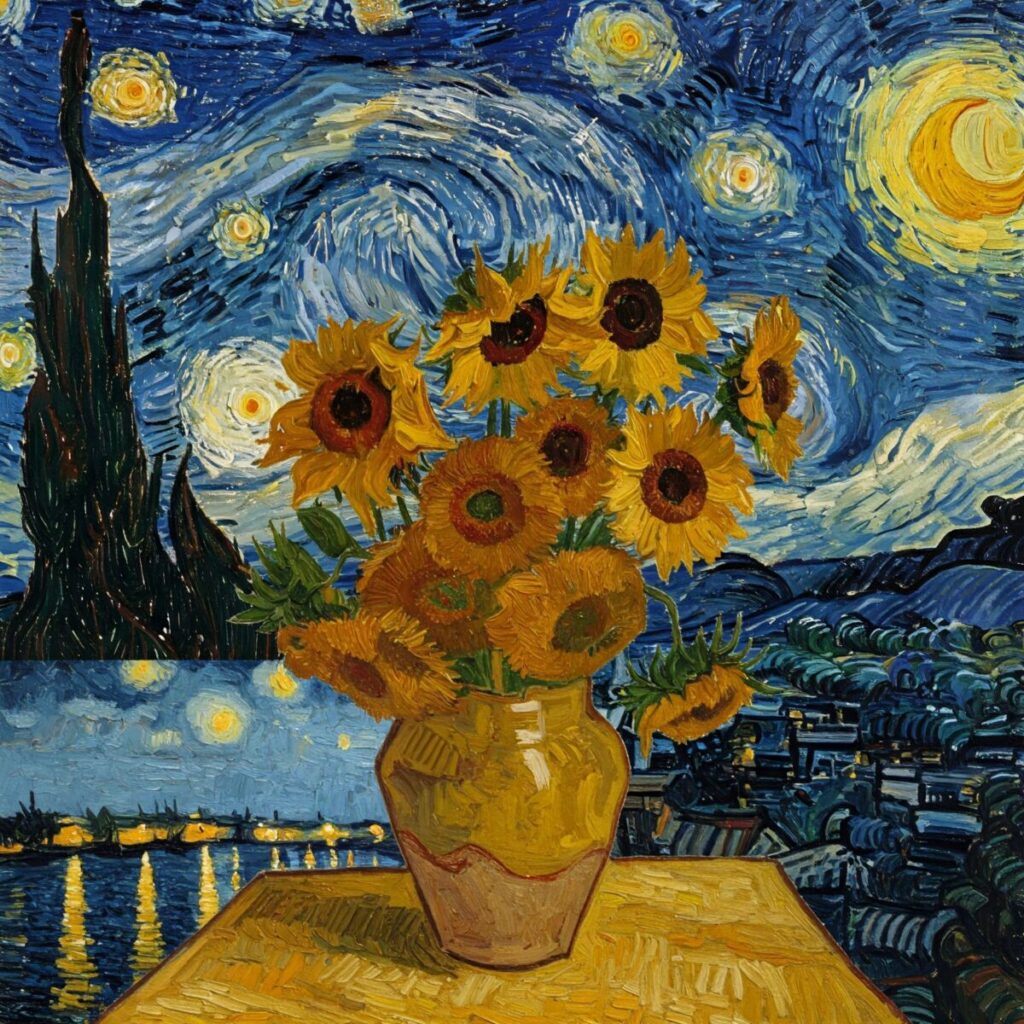Welcome, art explorers! Get ready to dive into the incredible world of Paul Cézanne, an artist so important they call him the ‘Father of Modern Art.’ Before Cézanne, artists tried to paint things exactly as they looked. But Cézanne had a different idea. He believed you could paint not just what you see, but what you feel about an object, using shapes and colors to build a new kind of reality on the canvas.
Exploring the top 10 Cezanne paintings is like getting a backstage pass to the birth of modern art, where everything started to change. His work built a bridge from the Impressionism of his time to the wild new art movements of the 20th century, like Cubism. Let’s look at the top 10 masterpieces that shook the art world!
The Card Players (1894–1895)
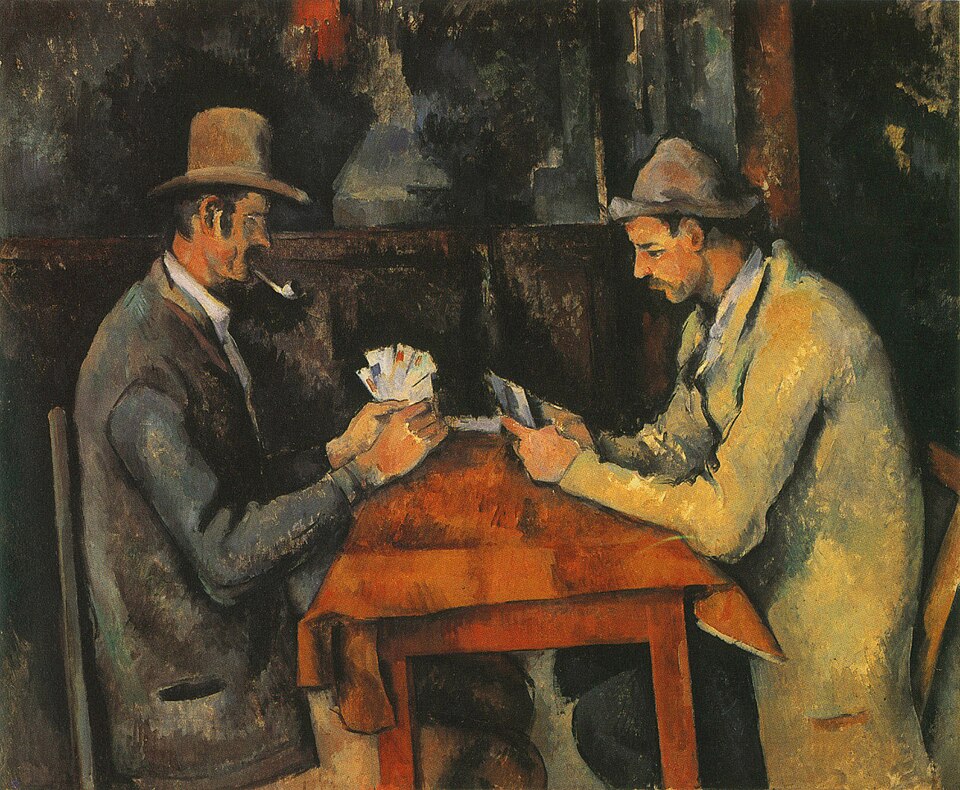
Description: This isn’t a rowdy card game. It’s a quiet, intense scene showing two local farmhands from Cézanne’s estate in Aix-en-Provence. He treats them like mountains or apples, focusing on their solid, geometric shapes rather than their personalities. The painting feels calm, serious, and timeless, as if these men have been sitting there forever. To create this single masterpiece, Cézanne made over a dozen sketches and painted several other versions with different numbers of players.
Painting Techniques: Cézanne used thick, constructive brushstrokes to build up the forms of the figures, giving them a monumental and sculptural quality. He simplified shapes into cylinders and spheres and used a muted, earthy color palette to create a sense of solemnity and permanence.
Location: Musée d’Orsay, Paris, France
Estimated Value: Priceless (Another version from the series sold for over $250 million in 2011)
Mont Sainte-Victoire (1902–1904)
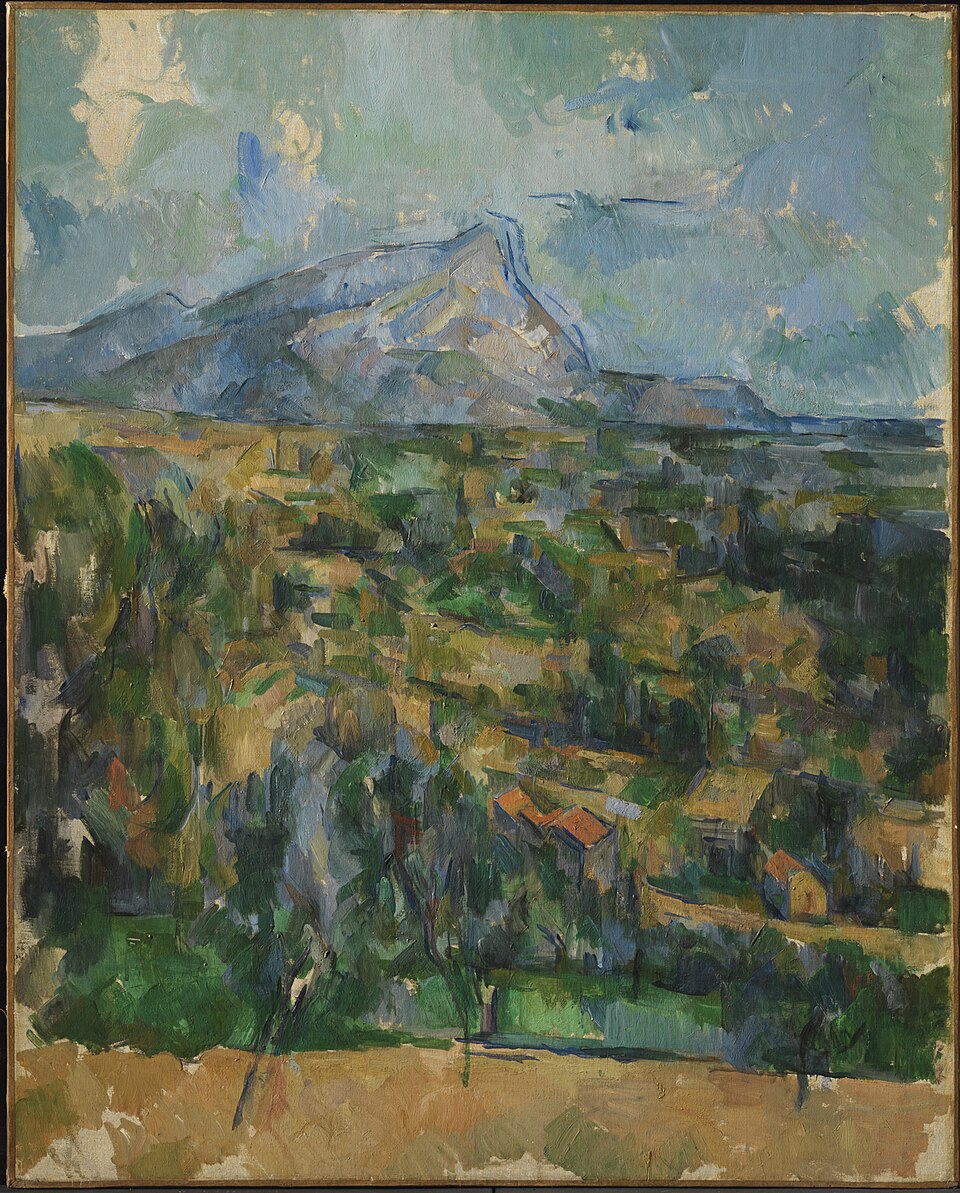
Description: Imagine having a favorite mountain you loved so much you painted it over 80 times! That was Mont Sainte-Victoire for Cézanne. This version shows the mountain not as a realistic photograph, but as a collection of colorful patches and shapes. It’s like he broke down the view into its basic building blocks of color and light. He painted this specific mountain, which he could see from his studio window, in over 80 different artworks throughout his career.
Painting Techniques: This work showcases Cézanne’s famous ‘passage’ technique, where colors and brushstrokes from one object blend into another, flattening the space. He used a mosaic of geometric brushstrokes to construct the landscape, treating nature as an architectural form.
Location: Philadelphia Museum of Art, Philadelphia, USA
Estimated Value: Priceless
The Basket of Apples (c. 1893)
Description: At first glance, it’s just some fruit on a table. But look closer! The table is tilted weirdly, the apples look like they’re about to roll off, and the wine bottle is leaning. Cézanne wasn’t bad at drawing; he did this on purpose! He wanted to show you the objects from multiple viewpoints all at once, creating a more ‘real’ image than a simple snapshot could. Art historians have noted that the right and left sides of the tabletop do not line up, an intentional choice to create a dynamic composition.
Painting Techniques: This still life is a masterclass in distorted perspective. Cézanne abandoned single-point perspective to capture the essence of objects from different angles simultaneously. He used thick paint (impasto) and vibrant colors to give the objects a tangible weight and presence.

Location: Art Institute of Chicago, Chicago, USA
Estimated Value: Priceless
The Large Bathers (Les Grandes Baigneuses) (1900–1906)
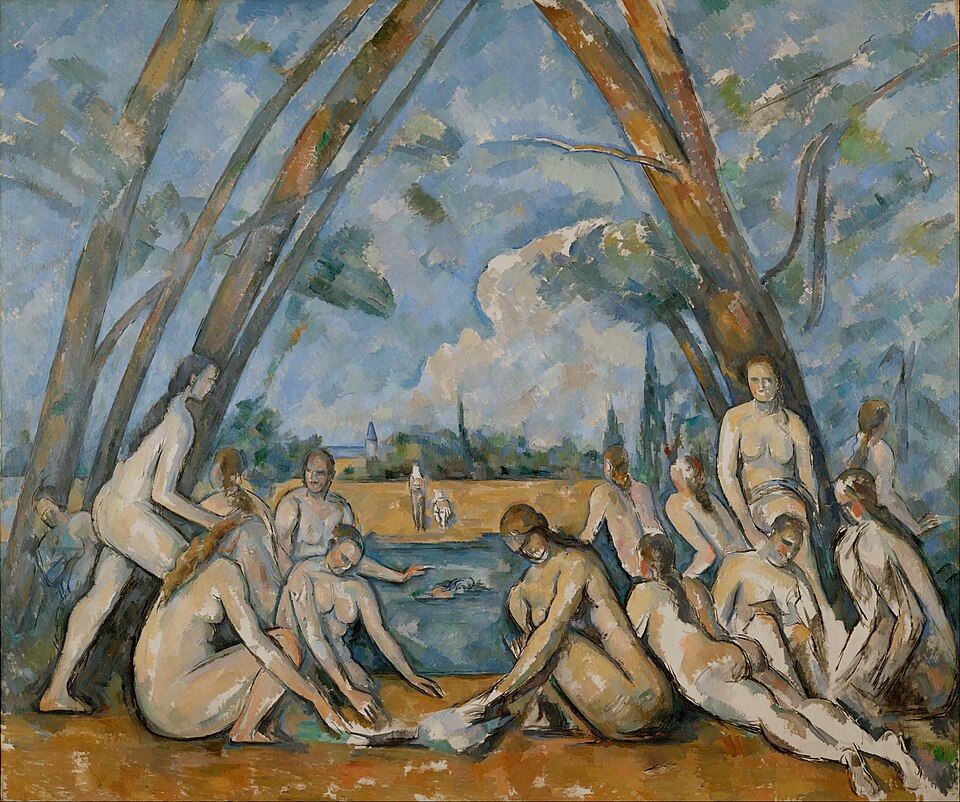
Description: This is one of Cézanne’s biggest and most famous works, which he worked on for the last seven years of his life. The bathing figures aren’t meant to look like real people but are arranged like parts of a building, forming a perfect triangle with the trees and sky. It’s a timeless, almost mythical scene about the harmony between humans and nature. Despite painting bathers throughout his life, Cézanne was shy and rarely worked with live nude models, relying instead on memory and imagination.
Painting Techniques: Cézanne abstracted the human form, reducing the figures to geometric components that form a stable, architectural structure. The painting’s composition is highly organized, with the trees forming an arch that frames the scene, a technique used by classical painters.
Location: Philadelphia Museum of art, Philadelphia, USA
Estimated Value: Priceless
The Boy in the Red Vest (c. 1888–1890)
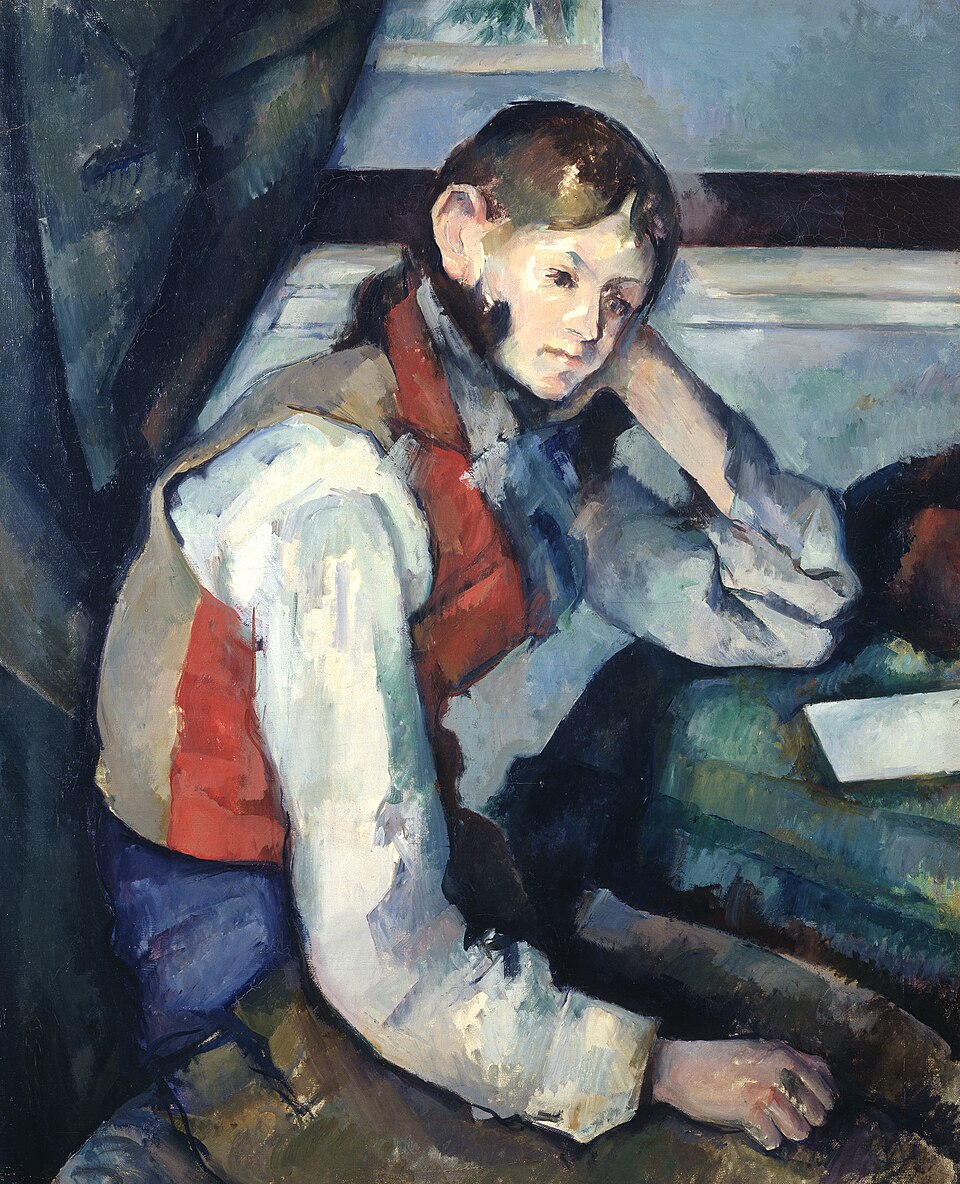
Description: This isn’t just a portrait of a boy; it’s a painting about shapes, colors, and moods. The boy, an Italian professional model named Michelangelo di Rosa, seems lost in thought. Cézanne focuses on the curve of his back, the long line of his arm, and the brilliant red of his vest, creating a picture that is both beautiful and a little bit sad. This famous painting was stolen from its museum in 2008 in a major art heist and was thankfully recovered in Serbia four years later.
Painting Techniques: The composition is built on a series of elegant diagonals and curves, from the boy’s posture to the draped curtain behind him. Cézanne used contrasting colors—the warm red vest against the cool blues and whites—to create visual harmony and emotional depth.
Location: Foundation E.G. Bührle, Zurich, Switzerland
Estimated Value: Estimated over $100 million
Still Life with a Curtain (Rideau, Cruchon et Compotier) (c. 1895)
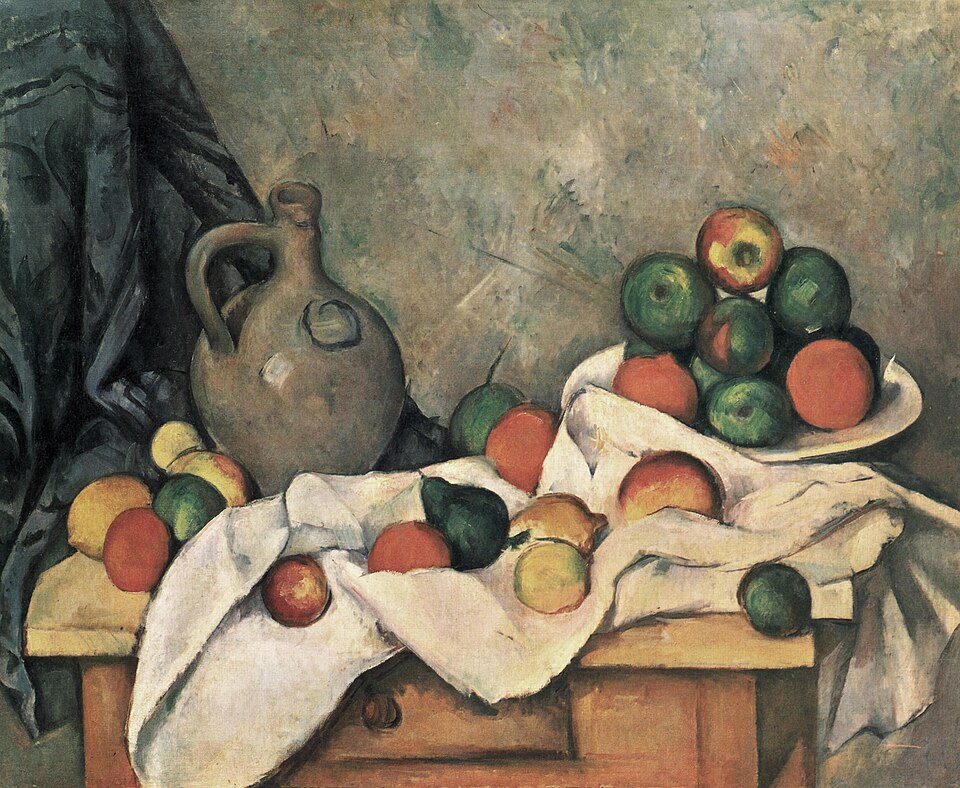
Description: Another one of Cézanne’s mind-bending still lifes! He’s playing with reality again, arranging fruit, a pitcher, and a dramatic patterned curtain into a complex scene. He cared more about the balance of colors and shapes than making the fruit look perfectly delicious. It’s a carefully constructed world where every object has its place. This painting set a world record for the highest price ever paid for a still life when it was sold at auction in 1999.
Painting Techniques: This painting exemplifies Cézanne’s mature style, combining rich, saturated colors with a complex composition. He used multiple perspectives and layered brushstrokes to give every element, from the fruit to the fabric, a sense of solidity and volume.
Location: Hermitage Museum, St. Petersburg, Russia
Estimated Value: Sold for $60.5 million in 1999 (worth much more today)
Pyramid of Skulls (c. 1901)
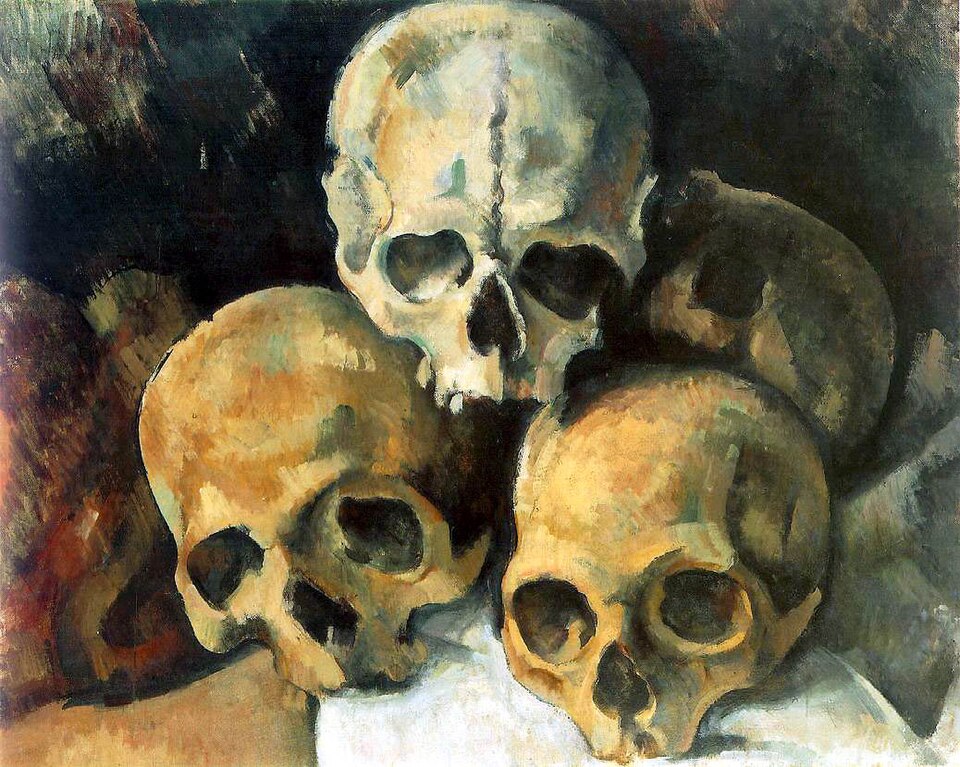
Description: This painting might seem a bit spooky, but it’s a powerful statement from late in Cézanne’s life. Instead of apples or oranges, he uses skulls. He arranges them like any other still life object, studying their shapes, shadows, and forms. It’s a classic theme in art called ‘memento mori,’ which is a fancy Latin phrase for ‘remember you must die.’ Unlike traditional ‘memento mori’ paintings which were often dark and dramatic, Cézanne painted the skulls with a certain analytical coolness and light.
Painting Techniques: Cézanne applied his still life techniques to this somber subject, focusing on the geometric structure of the skulls. He used dramatic lighting (chiaroscuro) and a restrained palette to create a powerful, contemplative mood, treating the skulls as purely formal objects.
Location: Private Collection
Estimated Value: Not publicly known, but considered invaluable.
Madame Cézanne in a Red Armchair (c. 1877)
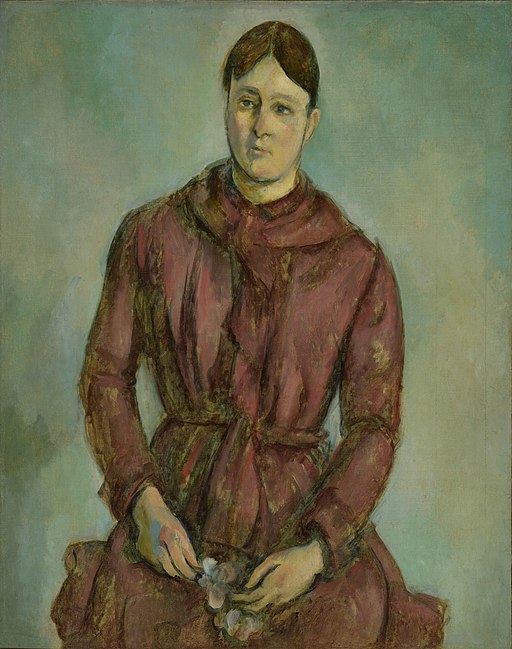
Description: This is a portrait of Cézanne’s wife, Hortense Fiquet. She doesn’t look very happy, does she? That might be because Cézanne made his models sit perfectly still for hours on end. He wasn’t interested in a flattering photo; he wanted to capture her solid presence in the room, treating her form with the same importance as the patterned wallpaper and the sturdy red chair. His wife Hortense was his most frequent model, sitting for him in nearly 30 different paintings over many years.
Painting Techniques: Cézanne uses flattened planes of color and a rigid, almost symmetrical composition to give his wife a monumental, enduring quality. Her face is simplified into a mask-like oval, directing the viewer’s attention to the overall design rather than her personality.
Location: Museum of Fine Arts, Boston, USA
Estimated Value: Priceless
A Modern Olympia (c. 1873–1874)

Description: This painting was Cézanne’s unique take on a very famous and scandalous painting called ‘Olympia’ by another artist, Édouard Manet. While Manet’s version was bold and confrontational, Cézanne’s is more like a dream or a fantasy. The scene is swirling with energy, painted with quick, flickering brushstrokes that show his early connection to the Impressionist movement. Cézanne created this piece as a direct, imaginative response to Manet’s controversial masterpiece, which had shocked the Paris art scene a decade earlier.
Painting Techniques: This work shows Cézanne’s early, more ‘Impressionistic’ style with its rapid, visible brushwork and dramatic contrasts of light and dark. The composition is dynamic and theatrical, differing greatly from the structured, calm approach of his later works.
Location: Musée d’Orsay, Paris, France
Estimated Value: Priceless
The Gulf of Marseilles seen from L’Estaque (c. 1885)

Description: L’Estaque was a small fishing village in the South of France where Cézanne loved to work. In this painting, he transforms the sunny view into a perfectly ordered design. The houses become simple blocks, the sea a flat blue plane, and the trees neat green shapes. He famously said he wanted to ‘make of Impressionism something solid and durable, like the art of the museums.’ Cézanne described the landscape here as looking like playing cards, which inspired his method of flattening the scene into geometric shapes and planes.
Painting Techniques: Cézanne applied a systematic approach, using horizontal bands of color to structure the landscape—the red-roofed village, the blue sea, and the distant mountains. His brushstrokes are controlled and parallel, helping to unify the canvas and create a sense of order and timelessness.
Location: The Metropolitan Museum of Art, New York, USA
Estimated Value: Priceless
Inspiration and Legacy
Paul Cézanne’s journey as an artist was shaped by key influences. In his early years, he admired the dramatic realism of Gustave Courbet and the romanticism of Eugène Delacroix. His most important mentor was the Impressionist Camille Pissarro, who taught him to paint outdoors and use a lighter color palette. However, Cézanne’s true legacy lies in who he inspired. He became a legendary figure for the next generation of artists. Both Pablo Picasso and Henri Matisse, leaders of Cubism and Fauvism respectively, famously referred to Cézanne as ‘the father of us all.’ His radical idea of breaking down objects into their basic geometric shapes directly led to Picasso’s development of Cubism. Cézanne’s work was the essential stepping stone between 19th-century Impressionism and the explosion of abstract art in the 20th century.
Final Thoughts on Top 10 Cezanne Paintings
Paul Cézanne wasn’t just a painter; he was a revolutionary thinker who changed the rules of art. He taught us that a painting could be more than a window onto the world—it could be a world in itself, built of color, shape, and the artist’s unique vision. By challenging traditional perspective and focusing on the underlying structure of things, he gave artists a whole new language to speak. The power and influence of Cezanne paintings remain immense, reminding us that looking closely and seeing things in a new way can truly change the world.
FAQs: Cezanne paintings
Why is Paul Cézanne called the ‘Father of Modern Art’?
He’s called the ‘Father of Modern Art’ because he created a bridge between the old style of painting (Impressionism) and the new, more abstract styles of the 20th century, like Cubism. He broke down what he saw into basic shapes, an idea that was revolutionary and inspired many artists after him.
What art movement was Cézanne part of?
Cézanne is most accurately described as a Post-Impressionist. He started his career with the Impressionists but eventually moved away from their style to develop his own unique, more structured and geometric approach to painting.
What makes Cezanne paintings so special?
Cezanne paintings are special because of his unique way of seeing. He ignored the traditional rules of perspective to show objects from multiple viewpoints at once. His use of ‘constructive’ brushstrokes, where each stroke helps build the form of an object, gives his paintings a solid, timeless quality that was completely new.
Did Cézanne become famous during his lifetime?
For most of his life, Cézanne was misunderstood and struggled for recognition from the official art world. However, by the end of his life, a new generation of artists had begun to recognize his genius, and his first solo exhibition in 1895 brought him significant fame among the avant-garde.


